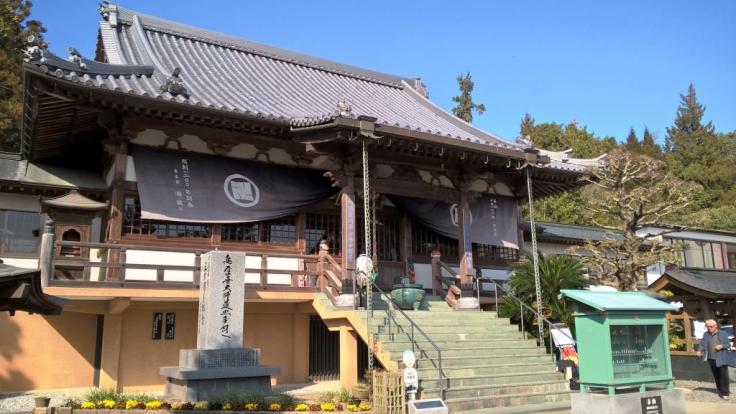I should probably back up a bit here and explain what Ohenro is. Henro means pilgrim and the ‘o’ is an honorific. People who see you in your uniform will often address you as ‘Ohenro-san’.
There are a few different pilgrimages in Japan mostly centering on Buddhist temples, but the 88-temple pilgrimage in Shikoku is probably the most well-known and when you say ohenro, you are generally referring to this one. For those of you not colour-blind, I covered the green part of the map this time.
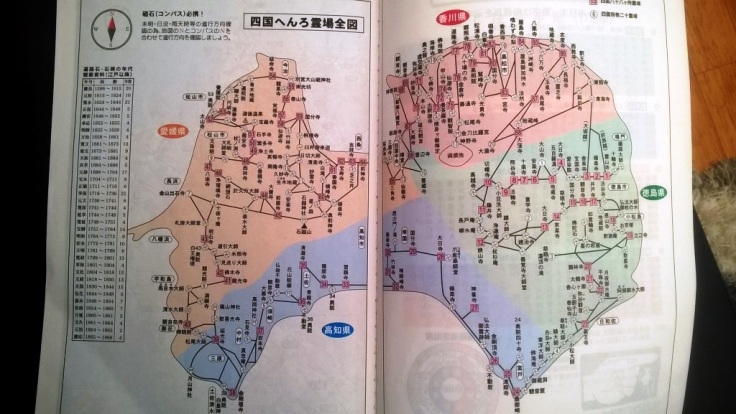
The pilgrimage is basically split into 4 parts that coincide with the 4 prefecture on the island. Each of these area is likened to a symbolic path to enlightenment, with temples 1–23 representing the idea of awakening (hosshin), 24–39 austerity and discipline (shugyō), 40–65 attaining enlightenment (bodai), and 66–88 entering nirvana (nehan). So at this stage, I’ve awakened, but haven’t yet entered Nirvana (but it does smell like teen spirit…)
You can Wikipedia/Google the crap out of Ohenro and find that many people have written very interesting and informative blogs about it, but in a nutshell it is a pilgrimage around the island of Shikoku in Japan that visits 88 numbered temples (and 20 un-numbered, unofficial temples if you wish) that were connected with the Buddhist monk Kukai (also post-humously called Kobo daishi) who was born in 774. He is said to have traveled to the temples, established some of them, carved statues of the deities at some of the temples and performed several special acts. His sect, known as Shingon Buddhism has a religious site at Mount Koya in Wakayama prefecture which is a place you are supposed to visit before and after the pilgrimage and is where he was interred.
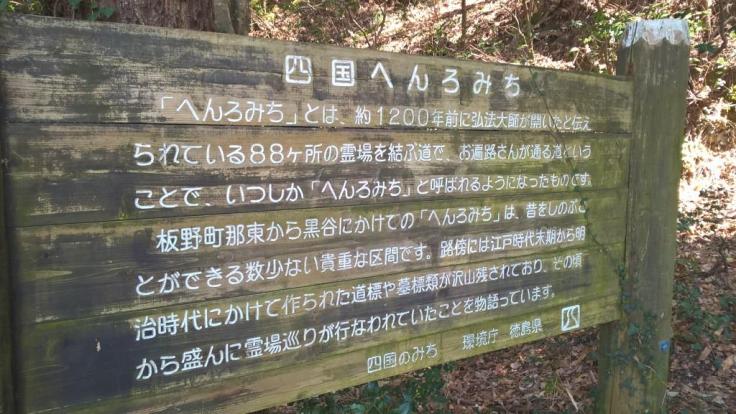
Some of the distance markers along the ohenro trail date back to the 1500’s but it has been walked for hundreds of years by thousands of people and while today’s path has moved off the original path in some places due to geographical or safety reasons, it is still basically the same path. Unfortunately, many of the original temple buildings either burned down by accident or were burned down in the social uprisings of the early Meiji period (mid to late 1800’s) but some statues and parts of the buildings are original.
The pilgrim uniform has significance in that the white garments replicate what you would be dressed in for your funeral. From the back, complete with sexy farmhand hat:
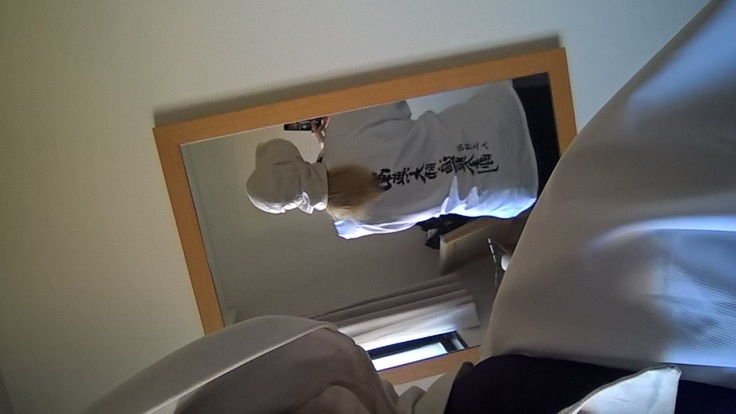
The walking stick could also be used as a grave marker. So basically they were preparing the pilgrims to die on enroute! (I said it was tough!) Written on the coat is Kobo daishi’s Buddhist name and doukouninin which means”travelling together” and is a central idea of the pilgrimage- that you aren’t walking alone, but together with him and you are protected by him. And this probably sounds like a bit of hooey, but there were a few times when I was walking alone with no-one and nothing around me and I felt like someone else was there.
What you wear and carry has significance and the stamps you receive for chanting the sutras were originally a way to prove that you had visited. The Shogun restricted travel during the Edo period and pilgrims had to get permits to travel that dictated the roads they could travel and the time limit to pass through certain places. The stamps were a way of proving passage and compliance with the permits.
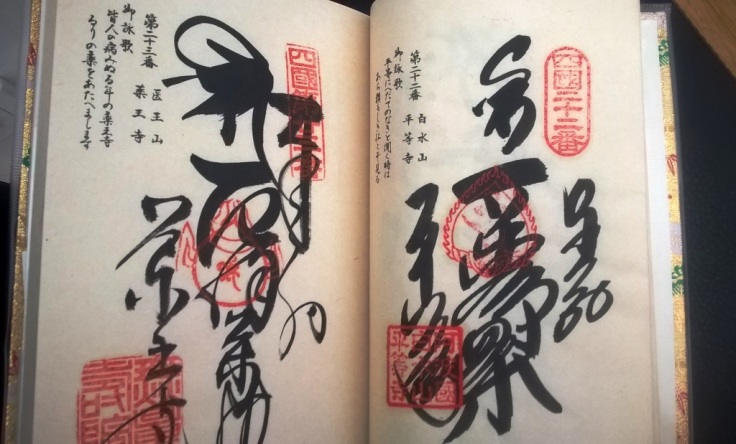
For Day 1 of my journey I’d set my alarm for a bright and early 5:30 so I’d have time to have some breakfast, check-out and get to the station for my 7am train. The early mornings definitely were a shock to my system as I’m not really a morning person and anything before 10am is ‘early’ to me.
The night before I’d shoved my extraneous stuff into my suitcase and taken it to the hotel where I would be staying on Wednesday night (the henro trail had me heading north and then circling back around again to where I started over the next four days).
I didn’t sleep much at all as I’d had the same butterflies-in-the-stomach-heart-and-mind-racing excitement that I’d experienced the night before my marathon. I was excited that it was really happening after all of these years and I was also nervous about whether I’d be ok physically, but always about whether I’d be able to do it ‘right’ meaning, I was concerned about doing any faux pas at the temples. And there are MANY occasions to do the wrong thing.
I’d read a lot about what to do and what not to do when I arrived at the temple:
- Take off my non-pilgrim-issue hat (it’s ok to keep on the straw hat) and bow before passing through the sanmon (main gate)
- Rinse hands and mouth (use your right hand to ladle water over your left, then left hand to ladle over right, then left hand to cup water to rinse out your mouth)
- Ring the bell and bow towards the hondo
- Go to the hondo (main hall) and light a candle and place it on the highest row (have to use your own lighter, not a light from anyone else)
- Light 3 sticks of incense and place in the middle of the incense burner
- Put some change in the offering box
- Ring the small gong and pray
- Put osamefuda in the osamefuda box
- Chant heart sutra, mantra of the main image and mantra of the light (with varying numbers of repetition)
- Repeat 4 to 9 at the daishido (dashi hall) except don’t say the mantra of the main image
- Go to the noukyoucho office and get the stamp in your book
- Turn and bow back towards the temple before exiting through the sanmon
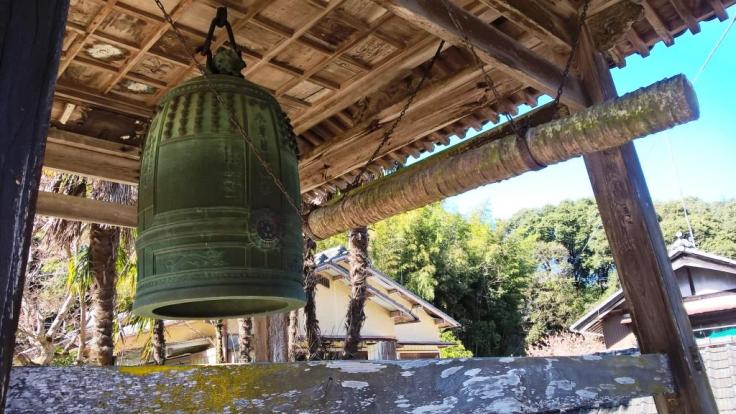
As well as all that, there was also a lot of other bowing and other little things about being respectful that you needed to keep in mind, not to mention the logistics of dealing with the walking stick and where to put it, putting down your backpack in an appropriate place, taking off the wagesa (stole) when going to the toilet or eating but not putting it on the ground, trying to light candles when it was blowing a gale, figuring out which hall was which, trying to find the sanmon if you accidentally went in through a side gate, what to do when there was a tour group of 30 people in front of you and you just want to do your thing and get back on the road again, whether it was appropriate to eat your rice balls in the temple grounds etc.
After you do it all a few times, it becomes very second-nature and you realise that a lot of the other people, even the Japanese have a lot of the same sort of things to work out, but at the beginning there was a lot of panicking. I also had the unique experience of running straight into a large bus tour group at Temple no.1 and they were hard-core with their chanting. The tour leader was dressed up like some shamanistic priest with skins and was chanting up a storm accompanied by some very loud stick clapping. It was very intimidating but they were done in 15 mins and were soon charging back to their bus to get to the next temple as quickly as possible.
Most people complete the pilgrimage by bus tour, bicycle, car or taxi. You can also join guided walking tours. Something like 150,000 people do it every year by the faster methods while only about 3000 people walk. I’m not sure how many non-Japanese do it, but it seems to be reasonably popular considering the quirky nature of it and the need for some Japanese language. I met 5 non-Japanese people during my week and 4 of them were women.
I’d put on my pilgrim uniform that morning feeling all sorts of proud and special, but then I felt very self-conscious when I was in the lift heading down to check-out and some other Japanese guests hopped in and looked me up and down with a smile on their face (I’d experience that same amused look up and down many, many times over the next 7 days). Fortunately check-out was achieved courtesy of a machine at the side of the reception desk and no-one else saw me until I was outside and heading to the station. Once again, I was super conscious of every one looking at me in my white outfit with purple monk sash blowing in the breeze.
It was windy, really windy and quite cold. I was glad for my gloves and layers as I walked over to the station, purchased my ticket and hopped on the diesel-powered single carriage train for the 20min journey north to the station that is closest to the 1st temple.
There were 5 other people on the train and none of them were dressed as pilgrims but a few of them had hiking gear on and were carrying back packs. I’d expected more people, seeing that it was long weekend and the start of one of the ‘official’ henro seasons (Spring & Autumn).
I arrived at the station and had my first experience of figuring out where I needed to go – it was a 10 minute walk through some town streets. I’ve never been a good map reader and the official map book I had bought was quirky. There really isn’t any other map book that you can buy for ohenro so it’s that one or nothing, but it took me a long time to understand how to use it thanks to the moving direction of north and the differing scales.
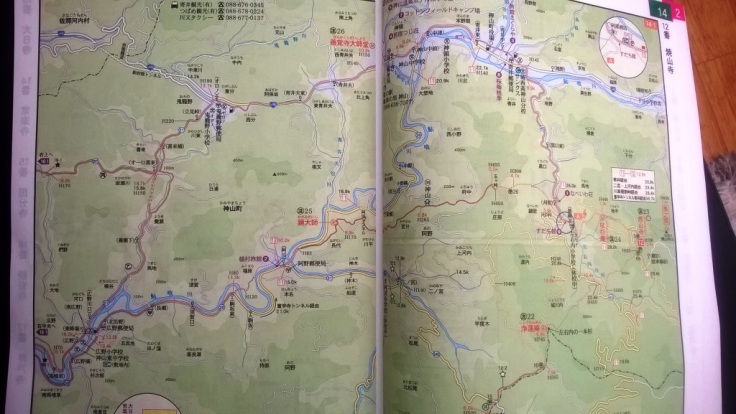
I really didn’t want to carry the B5-sized book in my hand as I walked along and I’d been meaning to just take some photocopies of the pages I needed, but I didn’t, which is something I regretted throughout the entire week. I had a tendency to look at the map for the next section and get a general idea of where I needed to go and how long it should take and then put the book away in my backpack. I’d sometimes wander along hoping I was heading in the right direction and couldn’t be bothered to stop, unbuckle my backpack, put it down, open it up, find the book, pull it out, find the right page, find where I was on the map, see where I needed to go and then put it all away. I also went old school and didn’t use my phone to find out where I was. I probably would have if I got really lost, but other than a few deviations from the path, I pretty much ended up where I needed to be one way or another.
I saw a non-Japanese couple in front of me (who I later learned were French) as I approached the sanmon (main gate). I saw them a couple of other times in the first three days at various points and then I didn’t see them again for the remainder of my journey.
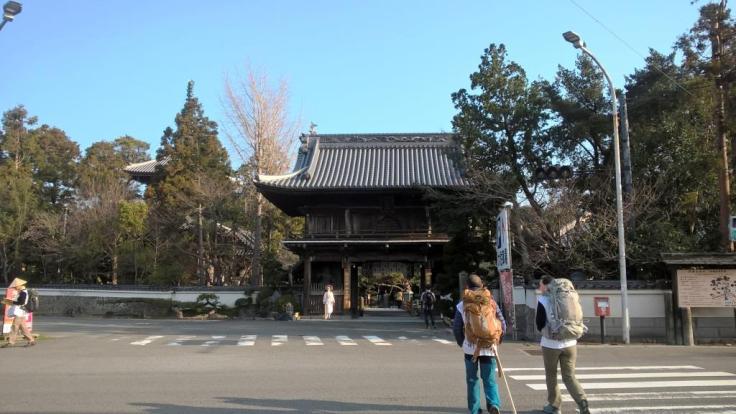
Ryozenji temple has a nice garden and a large shop to purchase all your ohenro goods. In my early planning I had intended to come to the shop on the Saturday and purchase all my stuff, but then I discovered the online purchasing option and went with that instead. After I had my book stamped, I purchased a walking stick for the princely sum of 1600 yen. I had pondered whether to buy one or not. It was part of the ‘official’ uniform (although I had strayed a bit from that for practicalities sake) and I thought they looked quite cool, but I knew I wouldn’t be able to bring it back to Australia with me without a lot of messing around because (a) it was wood and Australian quarantine would have a field day (b) it was too long to fit into my suitcase and (c) it was too long to take on as carry on so I would have to check it in as an additional piece of luggage and pay for the privilege.
If I’d been flying with JAL or another Japanese airline, I probably would have done my best to check it in or carry it on and they probably would have been ok with that, but because I was flying with Cathay via Hong Kong, I knew it would be a drama. I did like the idea of having the same stick for all of journey and some people I met had some well-worn sticks that had obviously been on several pilgrimages, but logistically speaking, my chances of being able to do that were not looking good. I did have the idea of leaving it with one of my friends in Japan, but then I would have to send it to their place by courier and pick it up again when I was setting off. It is also a bit of an inconvenience to ask my friend to store it in their tiny apartment and what if it takes me 4 years to finish this thing? So, I finally decided on leaving it behind at the last temple. There are special racks to store your stick in while you do your chanting etc. at each temple and I’d seen some others that looked like they had been left behind, so at temple 23, I took the hand grip off it to keep as a memento and left it behind.
The stick is actually the embodiment of Kobou Daishi and you have to take care of it, not lay it on the ground, wash it when you arrive at your evening’s lodgings and store it in a place of honour so I did feel bad about it, but there wasn’t really anything else I could do. The stick actually came in handy on several of the trails – checking for snakes, checking for what was under the soft dirt/leaves and for giving me a bit of support for some of the down-hill sections. The bell on it is supposed to ‘ground’ you by the sound taking you out of walking along mindlessly (you’re supposed to be aware of what you are doing at all times) but it fell off on the third day so I attached that to my backpack.
So after I arrived at the first temple and began my ritual, I realised I’d made my first rookie mistake – I’d only calculated for enough candles and incense for the main temple at each of the 17 temples plus a few random extras that I’d included to fill up the ‘grave visit case’ and stop everything rattling around. I wouldn’t be reunited with my suitcase (where my remaining stocks of candles and incense were..) until the end of day 4. This was not a good start for someone who wanted to do everything ‘right’. All was not lost though, candles and incense were on sale at various temples so I could replenish my stocks, albeit at 4 times the price I had paid for them at the 100 yen shop (but I was a pilgrim without candles and incense and that’s just not good form so I coughed up the money!)
On the first day I was scheduled to visit 7 temples + 1 okunoin (mausoleum connected with Temple no.4) and stay at a temple lodging that night. I had several books with suggested itineraries which don’t really differ all that much except most of them allow for 8 days for the first 23 temples and I was squishing it into 7. The recommendation was also to take it easy on the first day and only plan to walk <20km so I stuck with that and it was quite a comfortable day. Most of the walking was on asphalt roads that wound through residential areas and I enjoyed looking at all the houses and gardens – many of them traditional style buildings with manicured trees. There were a couple of small sections that went off the beaten track including winding through some yards of houses and between rice fields that seemed like private property, but apparently the henro trail has passed through there for hundreds of years so when in Rome!
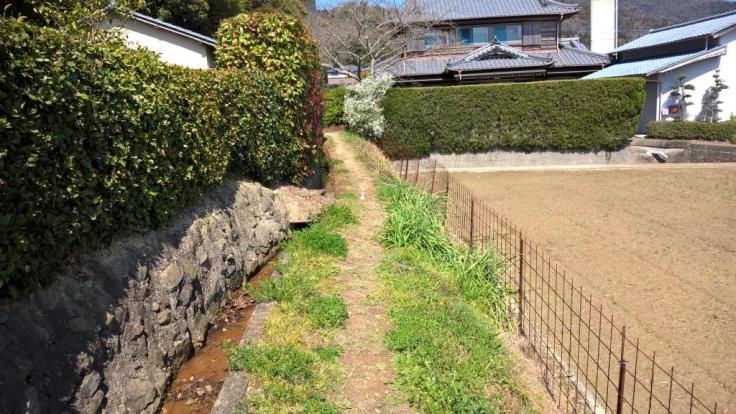
I caught up with the French couple I’d seen early that morning at the Aisenji okunoin between temple 3 and 4 as the path passed next to it. I read that the stamp from Aisenji was particularly pretty and wanted to get one so I went in and was met by two ladies who were offering the passing pilgrims tea and some odango (sweet pounded rice balls). It was my first experience of osettai, which is a lovely custom practised by the people who live in the ohenro trail area and basically involves them giving you gifts – usually food or drinks, but can be money or a night in their house or a lift in their car etc. In return for their gift giving, they receive good karma and it makes for some very interesting experiences and meetings.
The French couple were sitting down eating their morning tea and there was also a Japanese man there when I arrived. I learned that the French couple didn’t speak much Japanese but were on a complete pilgrimage for around 40 days. They had massive backpacks that just made my back hurt looking at them. I had a chat with the ladies who seemed to be tending the garden and tidying up the bangai temple and they asked me the typical questions of where I was from and was I walking alone etc. In return for the osettai you give the person one of your osamefuda as a thank you and some people also have a book where you write down your details and a short message. I received quite a few osettai during my week as well as a lot of encouraging words from people I passed, telling me to “Take care!” or “Keep it up!”
I’d made it one of my things to greet every person I passed on my journey to spread pilgrim cheer and I had some weird feeling as though it was expected of me to be a good person. Actually there are several virtues of a pilgrim that you are supposed to adhere to and if I’d thought about it a bit more, I probably would have abstained from alcohol as well, but I did have a drink and a couple of sips of beer (how do people drink that stuff?!?) provided by other pilgrims.
I’d read about the lodging at temple no.7 being very business-hotel-like and that was very true with two single beds in a carpeted room with a tv and fridge.
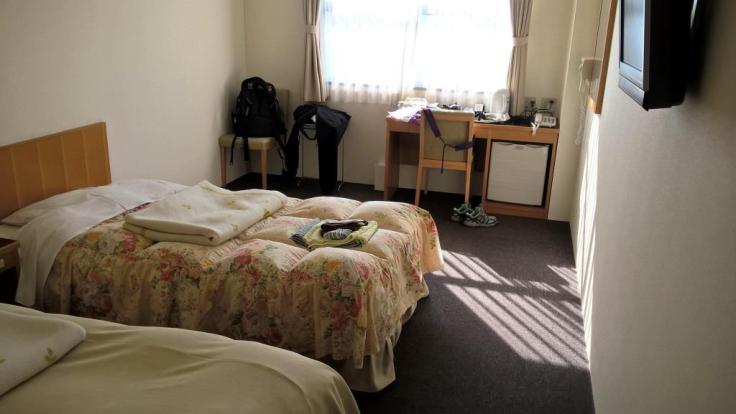
The bathroom was old and non-too clean, but they had a public bath as well (that I didn’t end up going in because hiding my tattoo is such a drama.) They also supplied a yukata and toothbrush. The only way to make a reservation was to call the temple and I did that about 3 weeks before. The lady who answered was quite concerned by the fact that I was overseas, saying that overseas guests had a habit of making reservations and then not turning up so she wanted me to call again on the day before to confirm my reservation, which I did. I did my usual trick of using my Japanese married name to make reservations because everything just goes so much smoothly. I’d also read some advice that single women can attract some unwanted attention on the trail so I’d planned on telling people I was married if the topic came up. I don’t know whether there really would have been any problems, but it’s a much easier story than going into the whole divorce thing.
I had arrived about 3:30pm and the very first thing I did was wash my clothes and hang them up to dry against the windows where the afternoon sun was pouring in. During the week I became used to the daily clothes wash and pumping up the aircon until the room resembled a sauna to get things dry.
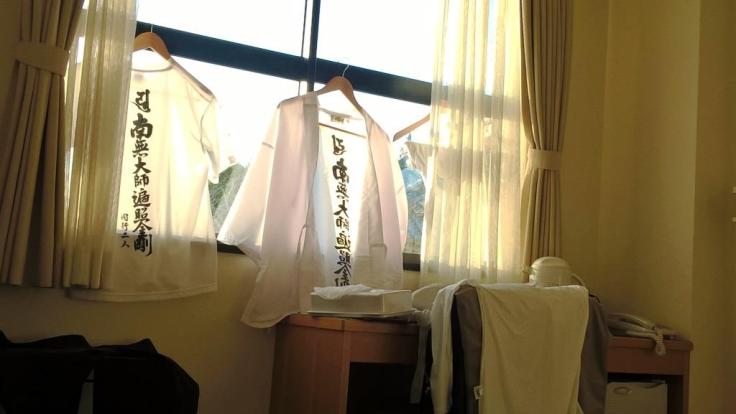
Meals at some temples are vegetarian affairs, but here it was just standard fare. Dinner and breakfast were included and served in a dining hall on the first floor of the building and an announcement came over the in-room loudspeaker at 6pm telling us that dinner was served!
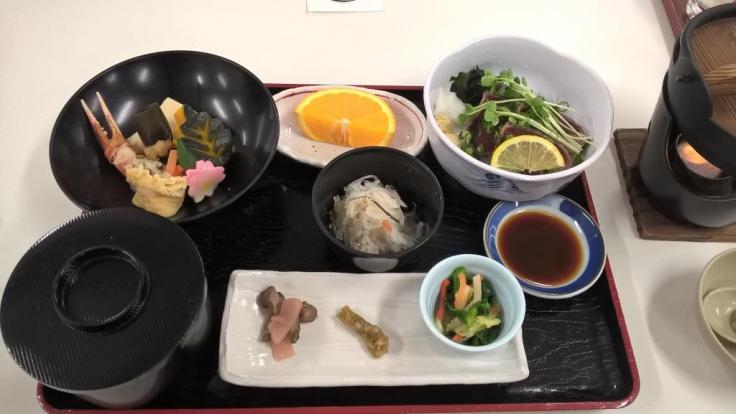
Breakfast the next morning was served at 7am but there wasn’t any announcement this time.
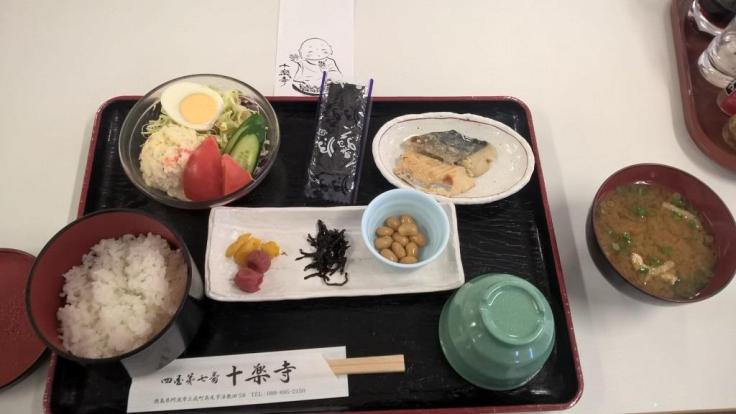
The resident monk was also away so there was no morning chanting service at 6:30am which I was a bit sorry about. It would have been an interesting experience to go into parts of the temple that the public usually can’t go and to witness chanting done by a professional! There were 4 walking pilgrims and a couple of groups of 4 that were travelling by car and enjoyed some beer during dinner. We all left the next morning at different times and I was the last to leave, but I passed them all at different times during the day.
Temples 1-7
- Ryozenji
- Gokurakuji
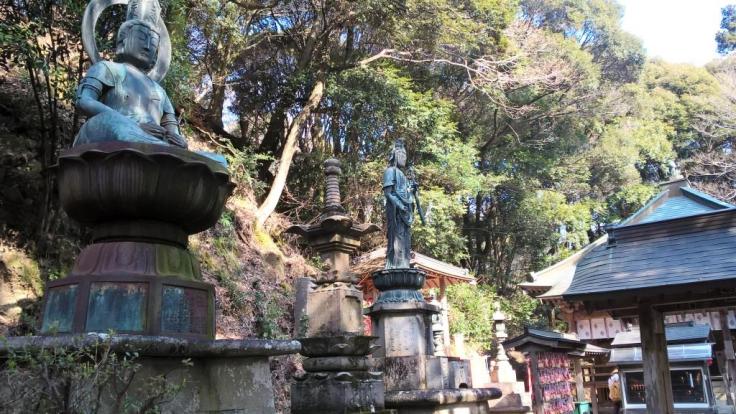
- Konsenji
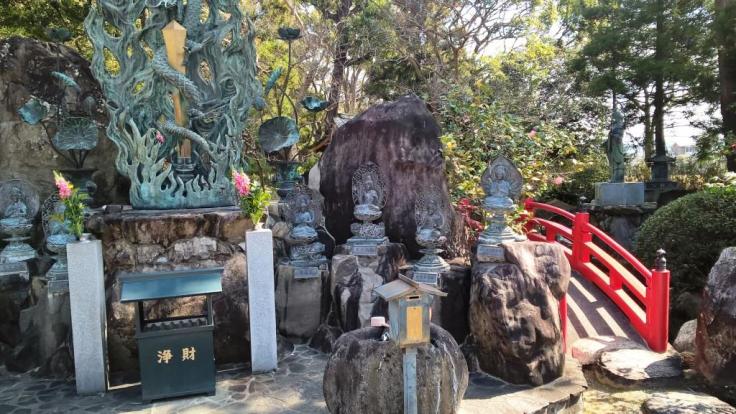
- Dainichiji
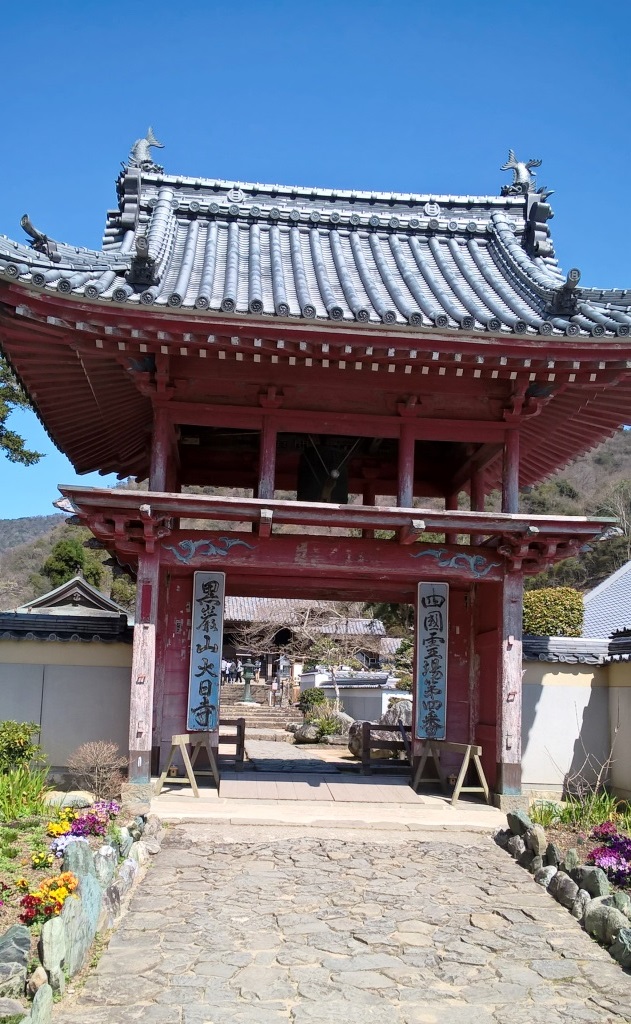
- Jizouji
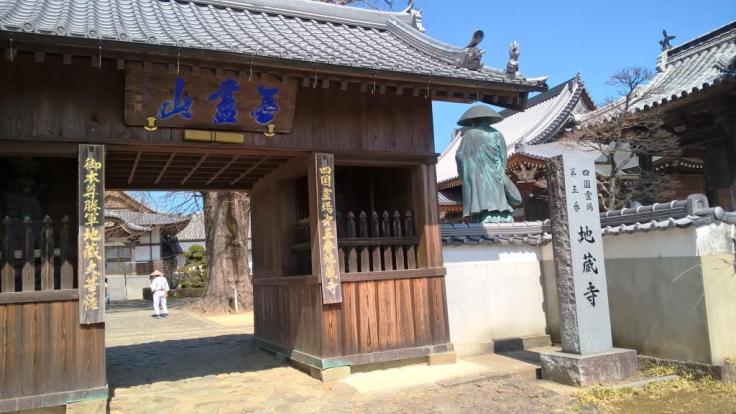
- Anrakuji
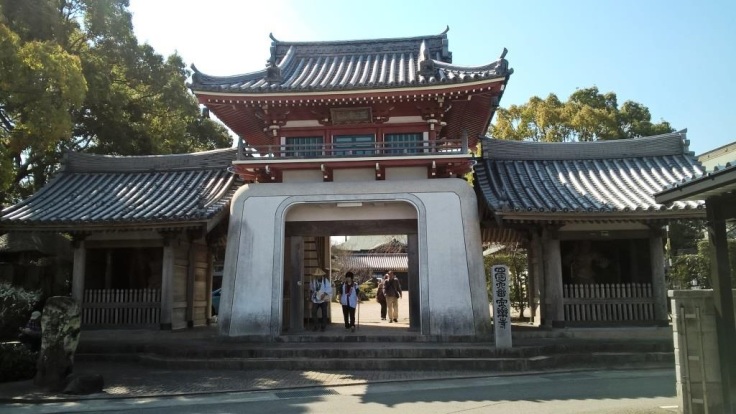
- Juurakuji
